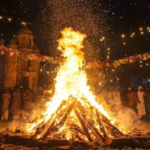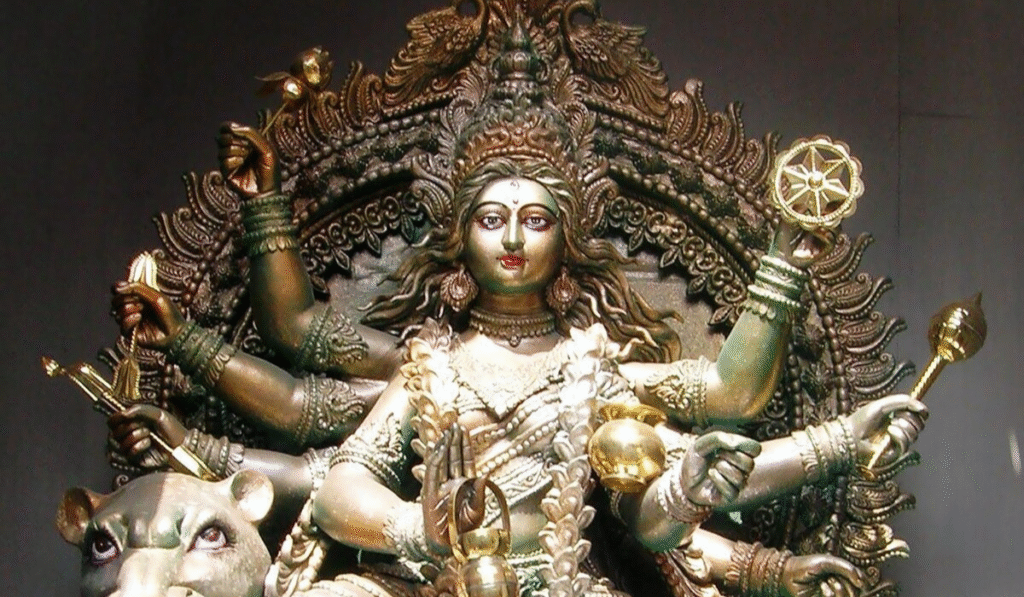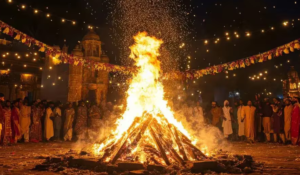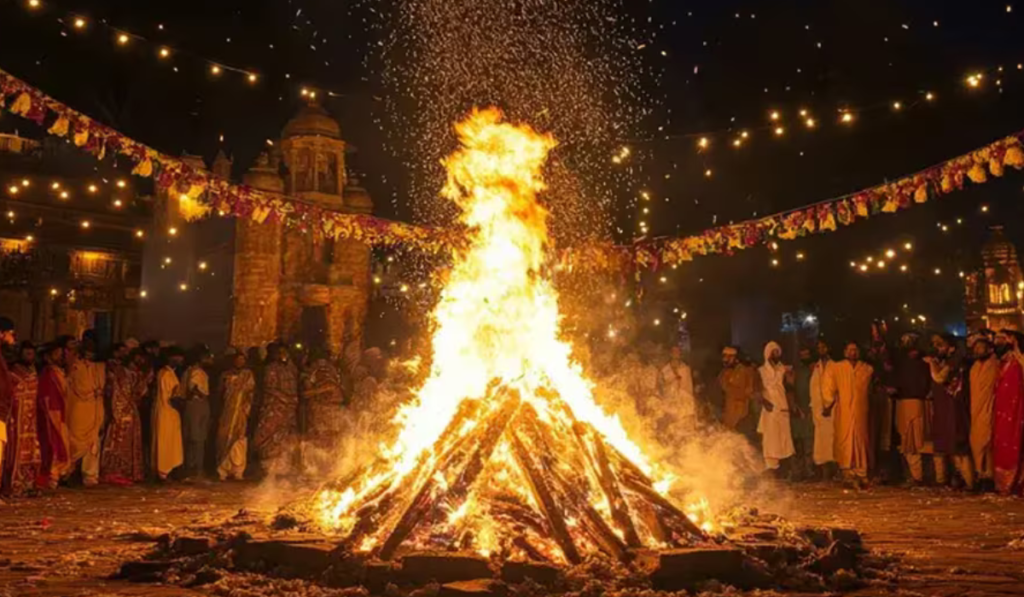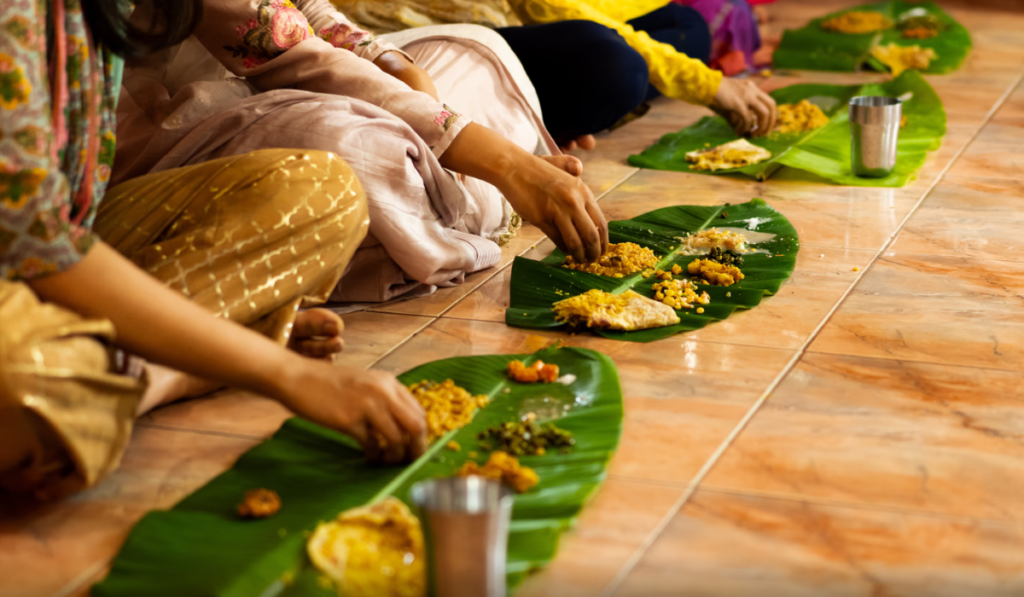The 4th day of Navratri is the day of the cosmic creator, who created the entire existence with just her warm smile. Yes, that is true, according to the Durga Saptashati, the creator of everything we know has been created by the first form of Adishakti – Maa Kushmanda.
The first three days of Navratri gave us grounding through Maa Shailputri, discipline through Maa Brahmacharini, and strength through Maa Chandraghanta. But none of this would have existed if Adishakti herself had not emerged from the nothingness as Maa Kushmanda.
Why is she given this stature as the mother of gods, humans, and demons alike? And if she is the source of all creation, why do we have so many gods?
Maa Kushmanda is not just a mystery. She is history itself. Let’s explore her story and the destiny she shaped for us all.
Who is Maa Kushmanda?
Maa Kushmanda is the first and supreme primordial form of Maa Adishakti. Her name describes her well. Ku means little, Ushma means light and warmth, and anda means egg. She is a mother who bore the great cosmic egg of all creation.
Because she is the source of all light, all energy, all warmth, and all life. But how did it all begin? Well, to understand how the first form of Adishakti spawned, we need to understand how this world we know so dearly came into existence.
How Maa Adishakti Became Maa Kushmanda?
To understand it, we must go back to the time when time itself wasn’t a thing. To the Kalpantha, the end of kalpa, when there was nothing but a pitch-dark void of nothingness. But slowly and gradually, a sublime light emerged from the nothingness and took the shape of a divine and magnificent feminine form.
When Maa Kushmunda took her full form, with her radiant smile, light started to spread in every direction, giving birth to planets, universes, life, and time. The purpose of Maa Adishakti to take this form was to reinitiate life in the cosmos.
Later, after creating life and everything, she rested her shakti in the Surya mandala, giving power to the sun to continuously emit light and warmth. This is why Maa Kushmanda is also known as Surya Mandala Antarvardhini.
But before going dormant again, Maa Kushmanda gave birth to three powerful deities: Mahalaxmi, Mahasaraswati, and Mahakaali. These three Mahashaktis gave birth to our renowned trinity of God and Goddess.
This might sound unbelievable and more like the Big Bang theory, but that’s how everything began, according to the Durga Saptashati, which was written between the 5th and 6th centuries. It was long before the Big Bang theory was proposed in 1927.
How Maa Kushmanda is Depicted?
In her primordial form, Maa Kushmanda shines as a bright light of creation:
- She has eight hands, and that’s why she is often known as Ashtabhuja Devi.
- In her hands, she holds the chakra, gada, bow, arrow, kamandal, lotus, and a jar of amrit.
- Her eighth hand blesses devotees with protection and fearlessness.
- Her wahan is a lion, a symbol of courage and strength.
Her face glows with motherly warmth, but her form also radiates power. She shows us that creation and protection always go hand in hand.
Why Do We Worship Maa Kushmanda on Day 4 of Navratri?
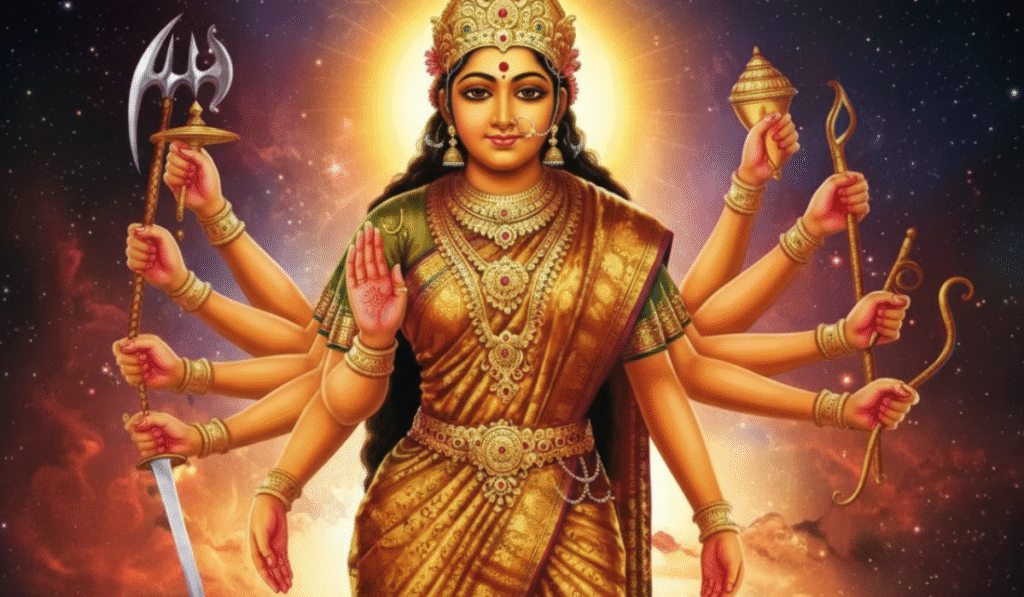
If Maa Kushmanda was the source of everything, then why do we worship her on the 4th day? Why don’t we celebrate him on day 1?
On Day 4, devotees call upon Maa Kushmanda to bless their homes with good health, wealth, and positivity. Since she is the one who first brought energy into the universe, worshipping her is believed to infuse our lives with new light.
She is also said to reside in the core of the sun, controlling its energy and life force. That’s why on this day, prayers to her are linked to strength, vitality, and inner healing.
Why Do We Wear Yellow on Day 4 of Navratri?
The fourth day of Navratri glows with the radiance of Maa Kushmanda, the cosmic creator whose very smile is said to have sparked the universe into existence. And just like her divine light, the color of the day is yellow, bright, warm, and full of life.
Yellow isn’t just any color. It’s the color of sunlight breaking through the morning sky, of joy that seeps into your heart, of hope that chases away darkness. Wearing yellow is believed to lift your spirits, bring clarity to your mind, and fill your life with optimism.
When we adorn ourselves in yellow to offer prayers to Maa Kushmanda, it’s said to brighten our aura, aligning our energy with hers. Devotees believe this helps attract her ashirwad of health, prosperity, and vitality, wrapping us in a warm, protective glow.
So, on this day, don your yellow saree, kurta, or dupatta, and let every shade of sunlight in your outfit mirror the brilliance of Maa Kushmanda. Step into her radiance, welcome her blessings, and let the joy of yellow illuminate not just your clothes, but your heart.
Mantras and Prayers for Maa Kushmanda
Here are simple mantras that devotees chant on Day 4:
Beej Mantra
ॐ ऐं ह्रीं क्लीं कूष्माण्डायै नमः॥
Om Aim Hreem Kleem Kushmandayai Namah
Stotra
सुरासम्पूर्णकलशं रुधिराप्लुतमेव च।
दधाना हस्तपद्माभ्यां कूष्माण्डा शुभदास्तु मे॥
Sura-sampurna kalasham rudhira-apluta meva cha,
Dadhana hastapadma-bhyaam Kushmanda shubhadaastu me.
You don’t need to chant perfectly. Even a heartfelt Jai Maa Kushmanda with devotion is enough for her blessings.
Conclusion
On Day 4, Maa Kushmanda blesses us with health, vitality, and light. She reminds us that even when life feels heavy, a smile can create worlds.
But Navratri is a journey of progression. Tomorrow, on Day 5, we meet Maa Skandamata, the motherly goddess carrying little Kartikeya in her lap. Why is she called the Mother of the Warrior God? And what does it mean when divinity takes the form of pure motherhood?
Stay with us on My Favorite Corner as we continue this sacred journey.
Let’s stay connected! Come say hi on Instagram or follow us on Facebook for daily inspo.





